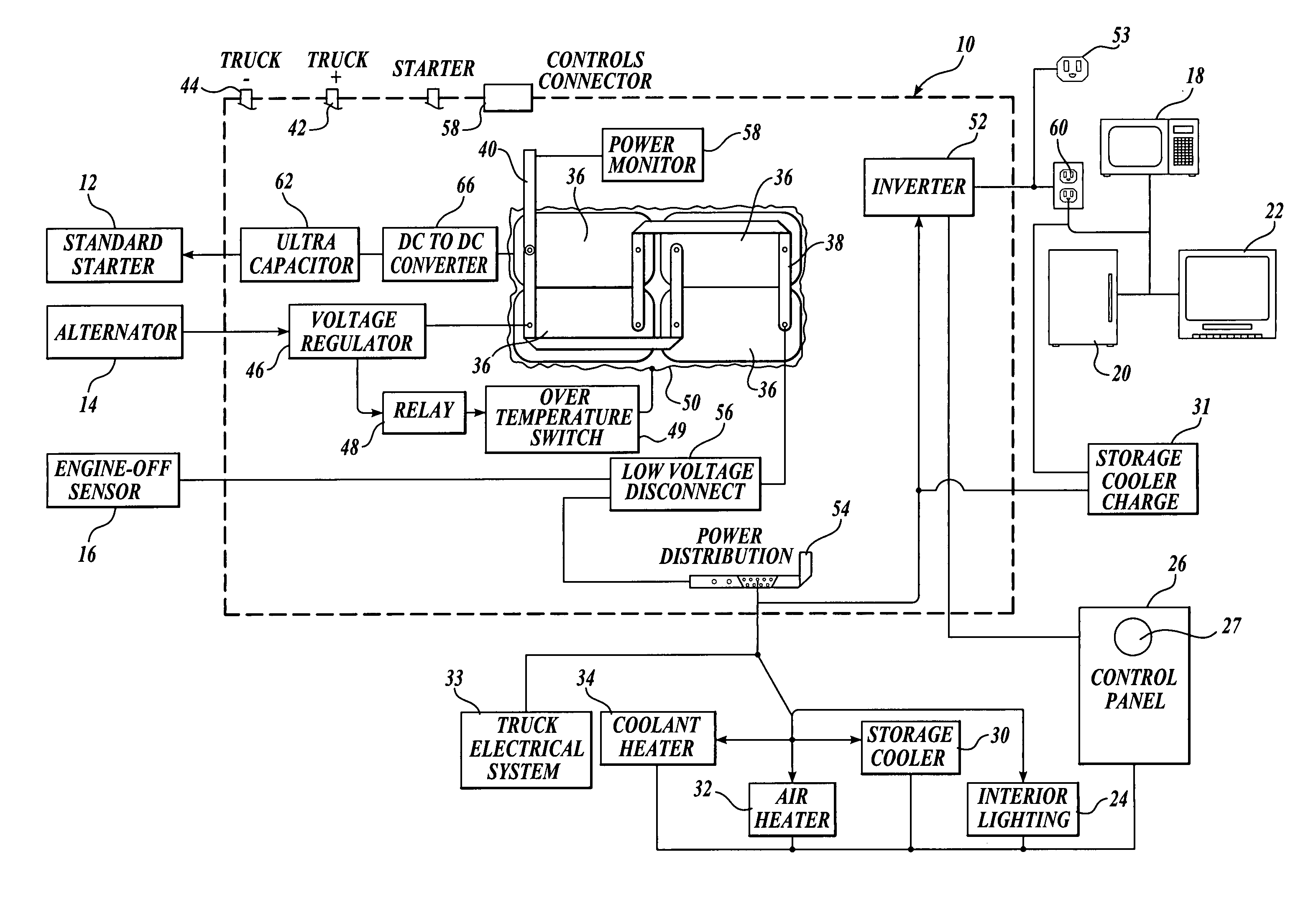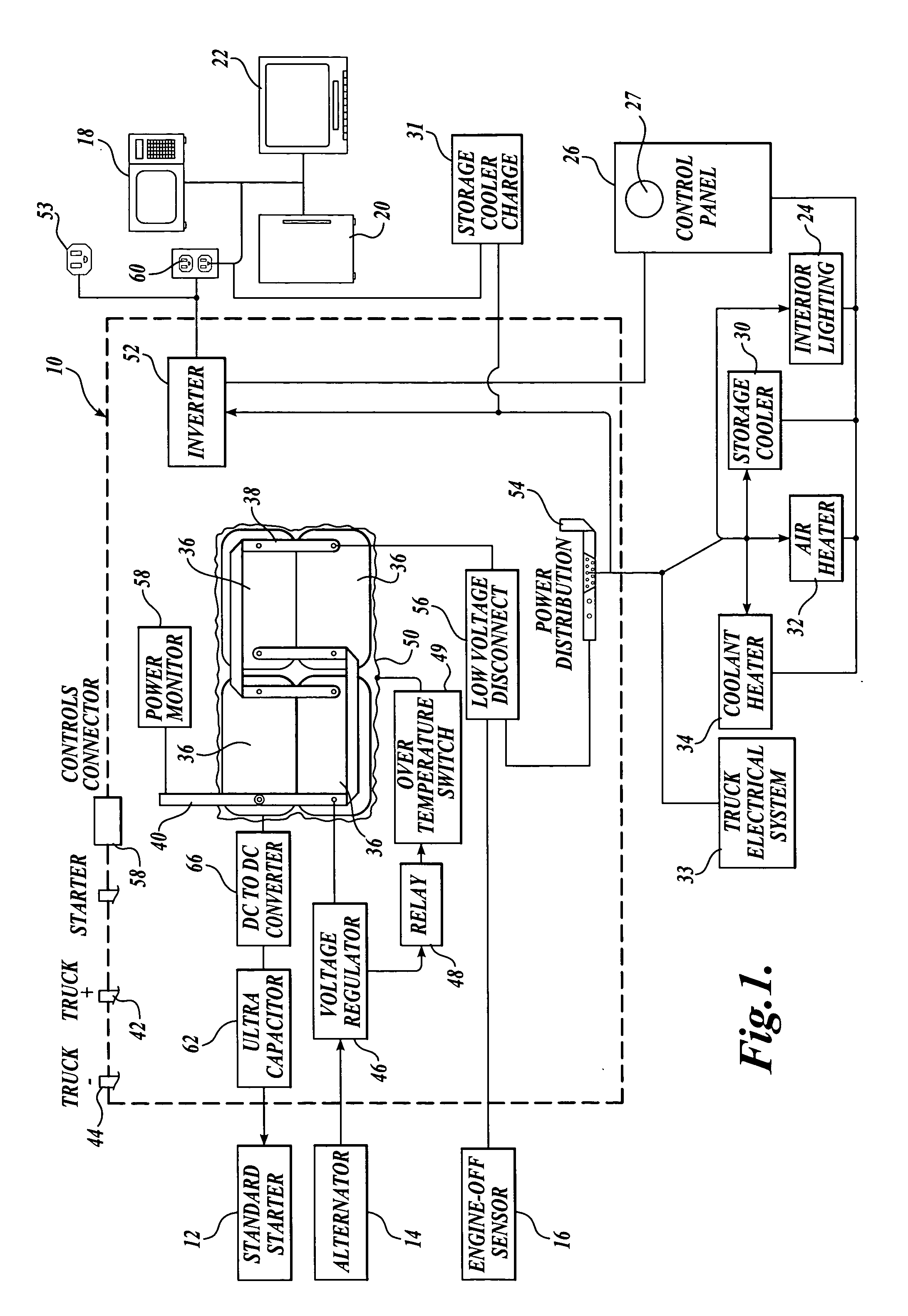Electrical power system for vehicles requiring electrical power while the vehicle engine is not in operation
a technology of electric power system and vehicle engine, which is applied in the direction of engine starter, battery/fuel cell control arrangement, machines/engines, etc., can solve the problems of electric power requirements and achieve the effect of reducing battery power capacity
- Summary
- Abstract
- Description
- Claims
- Application Information
AI Technical Summary
Benefits of technology
Problems solved by technology
Method used
Image
Examples
Embodiment Construction
[0024]FIG. 1 is a diagram that illustrates an embodiment of the invention configured for installation in a vehicle such as a diesel powered long-haul truck that is equipped with a sleeper cab. Components of the electrical power system of the invention are shown within dashed outline 10. As shall be described relative to FIG. 2, in one physical realization of the invention, all components of the power system shown within dashed outline 10 are contained within an insulated enclosure that thermally isolates the batteries of the power system from the thermal environment in which the enclosure is mounted. In another physical realization of the invention (shown in FIG. 3), only the system batteries are contained in an insulated enclosure.
[0025]Located outside dashed outline 10 of FIG. 1 are the truck starter motor 12, the truck alternator 14, and an engine-off sensor 16. Also shown outside dashed outline 10 are electrically powered hotel loads of the type involved with practicing the inve...
PUM
 Login to View More
Login to View More Abstract
Description
Claims
Application Information
 Login to View More
Login to View More - R&D
- Intellectual Property
- Life Sciences
- Materials
- Tech Scout
- Unparalleled Data Quality
- Higher Quality Content
- 60% Fewer Hallucinations
Browse by: Latest US Patents, China's latest patents, Technical Efficacy Thesaurus, Application Domain, Technology Topic, Popular Technical Reports.
© 2025 PatSnap. All rights reserved.Legal|Privacy policy|Modern Slavery Act Transparency Statement|Sitemap|About US| Contact US: help@patsnap.com



